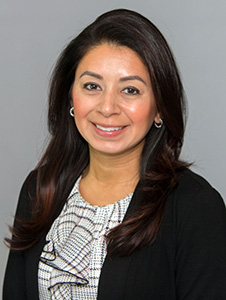For decades caregivers, practitioners, educators, advocates, and researchers, to name a few, have exhausted resources in promoting autism awareness in their communities (locally, nationally, and globally). According to the Center for Disease Control (CDC) (2019), the number of individuals diagnosed with autism spectrum disorder continues to rise regardless of race, ethnicity, or socio-economic status and currently the prevalence of autism is 1 in 59 children. Further, research has suggested that autism occurs approximately equally across ethnicities and cultures. A trend reported by the CDC indicated that more non-white children are being diagnosed with an intellectual disability and in fact receiving a diagnosis of autism later in life.

Solandy Forte, PhD, LCSW, BCBA-D
Many have strived to provide education to communities related to the signs and symptoms of autism and the importance of early intervention. In addition, various other topics related to autism are often provided to communities on topics such as education, evidence-based practices, legal rights (e.g., special education law, state insurance mandates, etc.), transitioning into adulthood, guardianship, and more. It is not an easy feat when community members come from different cultural backgrounds. In these cases, promoting autism awareness can bring about barriers when attempting to deliver information that can be reasonably understood and translated into practice or advocacy. Some of these barriers include differences in social practices or nuances, language barriers (including differences in dialect), difficulties with forming healthy working relationships with community providers, limited resources, and non-adherence to treatment.
Taking a multi-cultural approach allows for the recognition of cultural differences and focuses on finding solutions for educating a diverse group of individuals who share a common goal (in this case promoting autism awareness). While it takes a skilled person to meet the needs of a multi-cultural blended group of individuals, it is well worth it in the end. Often times, groups are formed to serve a particular ethnic or cultural group and in most cases this is successful. However, with the limited resources (e.g., time, space, funds) individuals have to educate community members on autism it is probably worthwhile to consider a different approach. So, how do promoters of autism awareness use a multi-cultural approach to effectively engage their community?
Listen and Observe
Engaging in active listening and observation will lead to discovering what exactly a member is seeking to learn about autism and how they will best acquire, retain, and apply the knowledge that they have gained from educational sessions. Each culture and its subcultures will have differences in beliefs, attitudes, and preferences related to assessment and treatment of autism. An individual leading a multi-cultural group will need to pay careful attention to the communities needs as they vary among cultures. Understanding and responding to the unique circumstances of a culture can lead to effective interactions with individuals/groups in the community while drawing upon their community-based values, traditions, and customs. When a community member is heard they will be more apt to take an active interest, share, and participate in learning about the information that is being shared.
Discover
Showing a bit of humility will lead to discovery. Showing interest and asking questions about cultural practices, beliefs, and preferences will assist not only the leader of the group but also its group members in understanding the barriers faced when making decisions related to the treatment of autism. Through this process, community members are partnering and joining in the quest to finding solutions and navigating through these barriers. As you can imagine there are many decisions that a family needs to make with regard to assessment and treatment of a loved one who has been diagnosed with autism.
Examine Your Own Cultural Beliefs
In order to fully gain an understanding of other cultures you must examine your own cultural beliefs, values, and biases. Your own cultural beliefs will drive the formulation of your opinions related to autism treatment and the motivation to instill your beliefs in others. Examining and acknowledging any differences between your own cultural identity and others will help to avoid unintentionally dismissing other’s cultural practices, prevent biased perceptions or disregard other’s beliefs, values, preferences, and practices, as well as promote a healthy relationship between you and community members, which is an important component. Sometimes this means being willing to step outside of your own comfort zone in order to learn the differences in cultural nuances. Again, the ultimate goal is to have the greatest impact on the community you serve as a whole while promoting autism awareness.
Celebrate
Arriving at understanding differences in cultures and how culture impacts the treatment of autism is the first step. Take each and every moment to celebrate with your community and acknowledge the victories members have had in raising autism awareness.
It is evident that cultural and linguistic diversity influences the identification of children with autism. By taking a multi-cultural approach to educating diverse communities about the early signs and symptoms of autism as well as evidence-based practices, we are reaching to close the gap. Strive to make a difference in a community by providing them with information about autism that they may not have otherwise accessed. All efforts make a difference in identifying a child with autism and connecting them with the resources they need to access the most appropriate treatment.
Solandy Forte, PhD, LCSW, LBA, BCBA-D, is Director of Consultation and Community Outreach at Milestones Behavioral Services. For further information please visit our website at www.mbs-inc.org or contact us directly at (203) 799-4110.
References
Center for Disease Control and Prevention (2019). https://www.cdc.gov/ncbddd/autism/data.html




